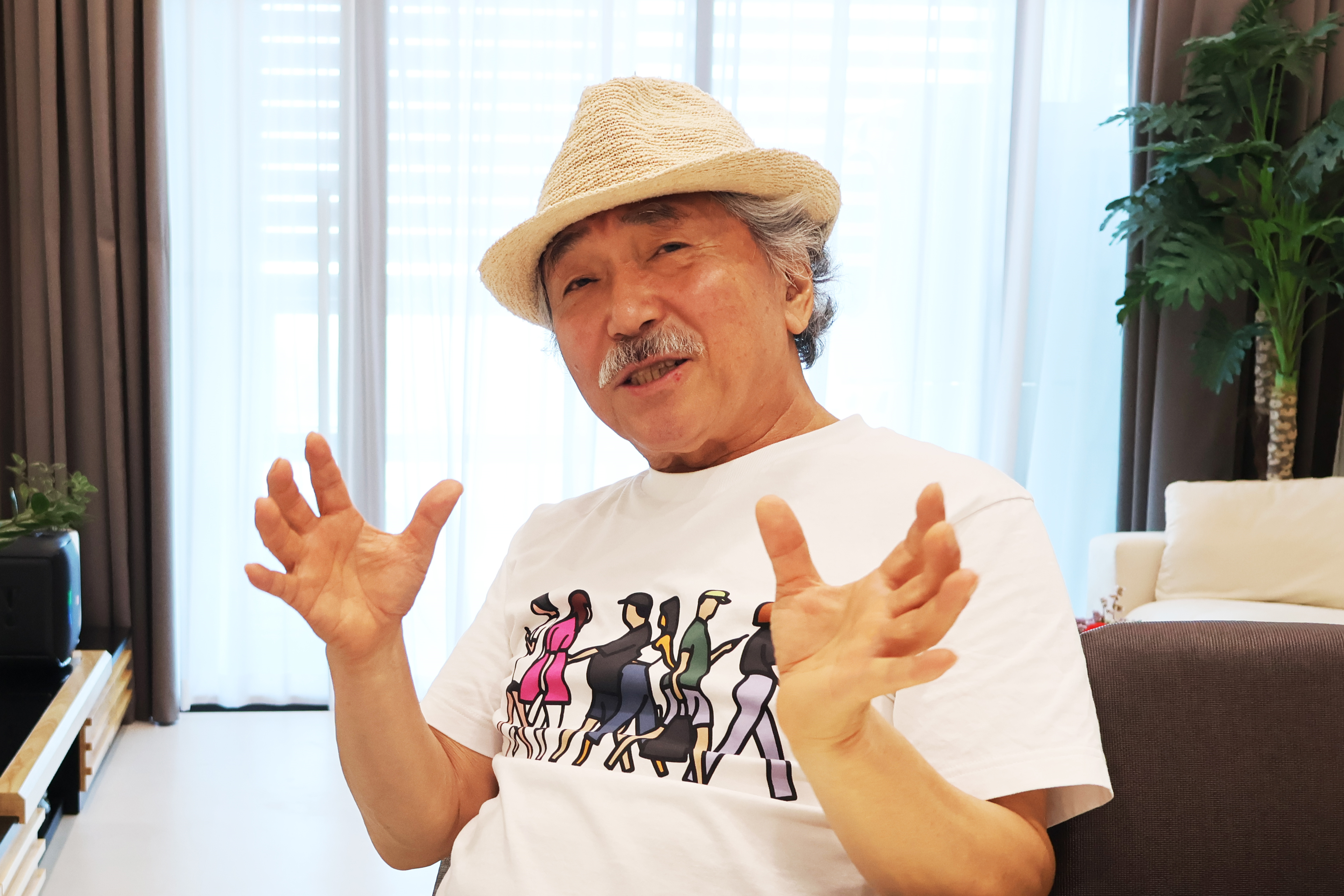The Era of Homo Artience: A Convergence of Science and Art
Artists Designers Engineers and Scientists Must Collaborate Local Governments and Research Institutes Should Join Forces to Foster the Cultural Industry By Myungseok Kim Honorary Professor of Industrial Design at KAIST

One of the unique departments at KAIST a specialized university for educating science and engineering prodigies is the Department of Industrial Design (ID).
Myungseok Kim (75) an honorary professor at KAIST who laid the foundation for this department initially studied applied arts at Hongik University but later earned a Ph.D. in Environmental Design Engineering from Osaka University in Japan.
As a founding member of KAISTs Industrial Design Department Professor Kim created a unique curriculum that educates graduates from science high schools in forward-thinking design contributing significantly to the departments rapid rise to global prominence. This trailblazing approach has often led him to be regarded as a pioneer both academically and in design.
Selected as the first G-Artientist in the science sector by G-Artience a group aiming to become the Davos Forum of Daejeon Professor Kim declared We are now living in the era of Homo Artience.
In an age where designs importance is increasingly recognized Professor Kim argues that humanity should now be referred to as Homo Artience reflecting the growing intersection of design with human life. While many discuss science and technology supporting culture and the arts Professor Kim advocates for the reverse: culture and the arts supporting science and technology.
About 30 years ago Professor Kim was commissioned by a major company to research ways to improve home appliances. He installed CCTV in 40 households to analyze refrigerator usage over 24 hours. The study revealed that the freezer compartment was used only 20-25% of the time. Based on this he concluded that to reduce the burden of household chores the refrigerator compartment should be placed above the freezer. Many modern refrigerators now adopt this design with the refrigerator on top and the freezer below.
Professor Kim has also developed emotional robots that interact with humans and introduced an office care robot for patrolling workplaces 21 years ago. Manna CEA an agricultural venture founded by one of his students successfully combined engineering and design to create new forms of agriculture attracting young people to rural areas with its advanced competitiveness.
Design too has levels of sophistication. In the past designers merely dressed existing products. A more advanced designer considers both the creators perspective and the task of dressing the product. The best designers as Professor Kim describes first conceptualize what kind of object will benefit humanity and be cherished. They then work alongside the producer throughout the entire production process. These top-tier designers possess a knowledge system that allows them to communicate freely with engineers scientists and humanities scholars.
When designers who understand this and scientists meet the synergy can be much greater. From this perspective Professor Kim believes that humanity is now living in the era of Homo Artience.
Professor Kim emphasized In Daejeon the city of science artists designers engineers and scientists should come together to discuss the development of new cultural content.
What may seem simple to scientists can be overwhelmingly complex for artists. As no one can live alone the world must be a place where people coexist and collaborate creating a peaceful and wise era. When people who aspire to create something new come together and make small compromises a synergistic effect can emerge. One way to achieve this is by connecting like-minded individuals.
Professor Kim suggested that G-Artience should play the role of a matchmaker that brings together artists designers engineers and scientists.
To facilitate such encounters he proposed creating a database of artists designers engineers and scientists interested in convergence. In fact the G-Artience Secretariat has begun collecting members personal information to build detailed profiles including lecture videos and authored works.
However for convergent cultural content to be sustainable it must grow into a cultural industry. Industries flourish when local governments central government agencies or research institutions collaborate. Policymakers perspectives must also evolve.
To this end Professor Kim proposed establishing a research association to seriously discuss the conditions necessary to foster industries that merge art and culture. This association should include artists designers scientists engineers local government officials and policymakers ensuring that practical strategies are devised and implemented.
He also suggested that international meetings such as the Science Economic City Union led by Daejeon should consider including a cultural industry component that allows more citizens to participate.
Professor Kim concluded Only when policy industry education and research are connected in a virtuous cycle will we be able to reap tangible rewards.
Website: : http://www.wip-news.com/news/articleView.html?idxno=24722
